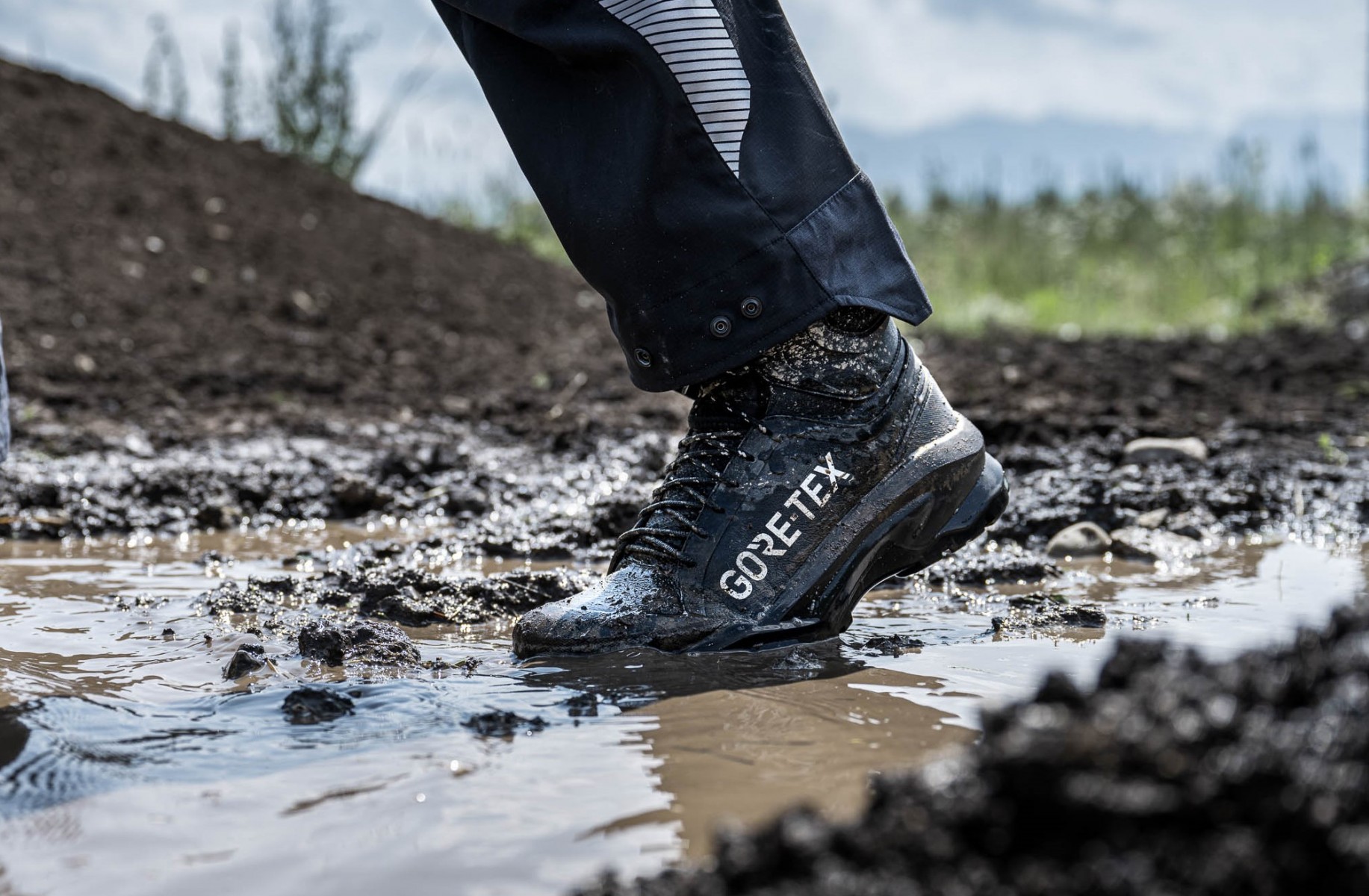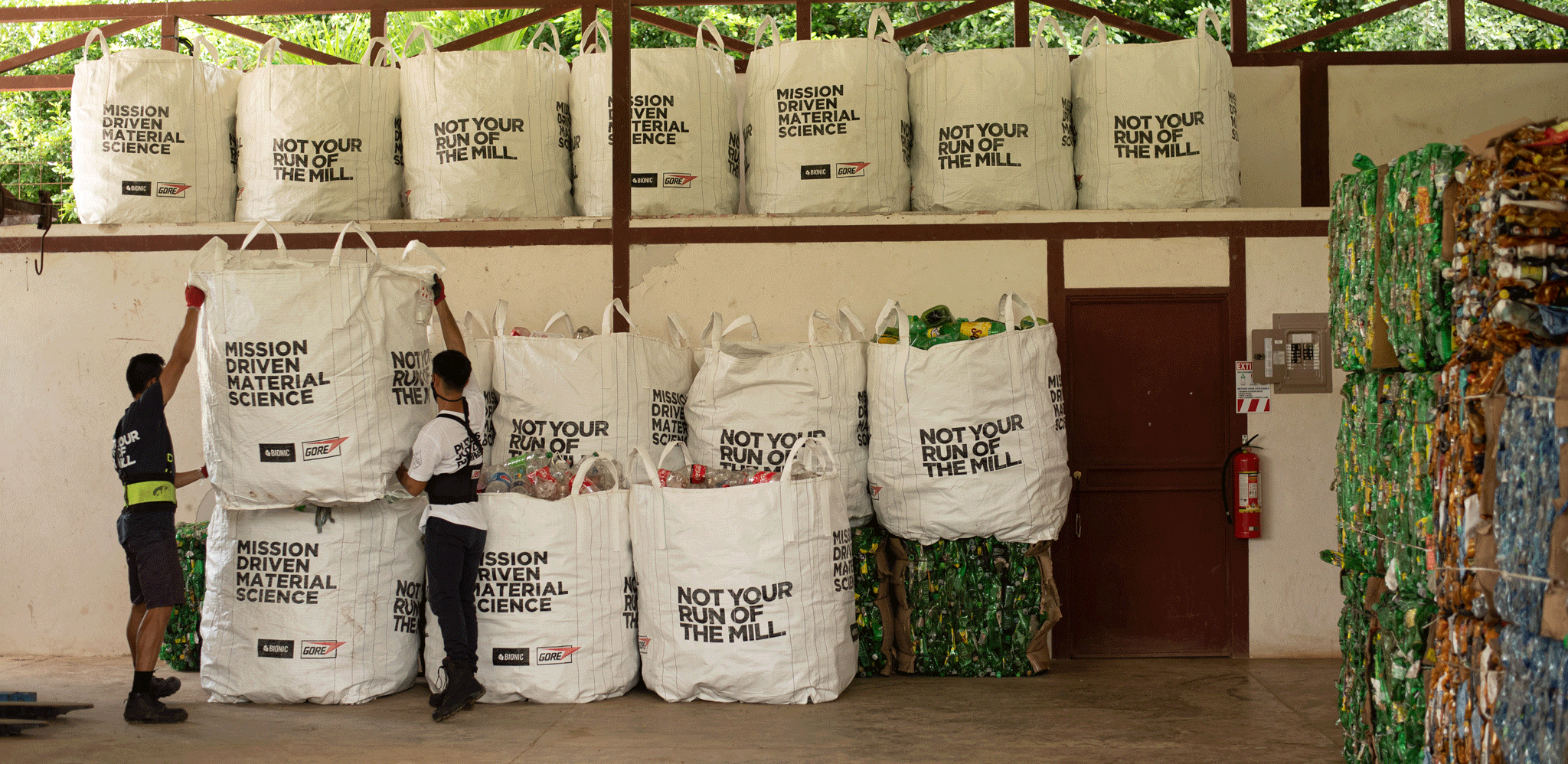Last Updated on June 3, 2024 by Annie Baldwin
Outdoor gear has come a long way in terms of performance, but how eco-friendly are today’s high-tech fabrics?
This article takes a close look at whether Gore-Tex is an environmentally friendly choice for your next waterproof jacket.
Is Gore-Tex Environmentally Friendly?

While Gore-Tex provides effective waterproofing, the use of PTFE and other synthetics in its production raises environmental concerns. Gore is taking steps to reduce its ecological impact, but the manufacturing process and non-biodegradable materials make Gore-Tex less eco-friendly than natural alternatives.
Key Points
- Gore-Tex contains PTFE made from PFOA, a toxic chemical harmful to the environment.
- Gore-Tex garments are not biodegradable and contain fluorinated compounds.
- Gore is developing more sustainable waterproof fabrics like its ePE membrane.
Our Opinion
In my opinion, while Gore-Tex offers high-performance waterproofing, its environmental impact is a concern. The use of PTFE and its inability to biodegrade make it less sustainable than some emerging alternatives. However, Gore is taking steps to reduce its ecological footprint. Consumers should weigh performance versus sustainability when choosing outdoor gear. More research is needed to develop waterproof fabrics that are high-performing yet eco-friendly.
How is Gore-Tex made?

The production process for Gore-Tex is complex, involving multiple steps to create its signature waterproof and breathable membrane.
It starts with PTFE, a fluoropolymer that is stretched into a thin, porous film. This film is then bonded to other materials like nylon or polyester to make it durable enough for clothing and outdoor gear. The result is a membrane with over 9 billion pores per square inch.
These tiny pores are smaller than water droplets, so rain and snow can’t penetrate. But they are still 700 times larger than a molecule of sweat vapor. This allows perspiration to escape, making Gore-Tex breathable.
To improve sustainability, Gore has also developed a PFC-free membrane technology called electro-spinning. This uses a different fluoropolymer called ePE that is spun into nano-scale fibers, creating a waterproof and breathable fabric for jackets and shoes.
While the production process for Gore-Tex is complicated, the brand has innovated over decades to engineer membranes that keep people dry without overheating. And by pioneering new materials like ePE, Gore is working to reduce the environmental impact of its tech-driven textiles.
Like any industrial process, Gore-Tex production has some environmental impacts that the company aims to minimize.
Historically, Gore-Tex was made using PTFE that contained PFCs – perfluorinated chemicals that are potentially harmful if released into the environment. Gore has now eliminated PFCs from its consumer products.
The manufacturing process also uses a substantial amount of energy and water. Gore’s facilities are working to increase renewable energy sources and recycle as much water as possible.
There are also impacts from sourcing raw materials like oil for plastics and chemicals. Gore focuses on responsible sourcing and partners with bluesign® to ensure suppliers meet stringent environmental standards.
At the end of a garment’s useful life, Gore-Tex products can be recycled. But many still end up in landfills. Gore is working to improve the recycling rates of gear containing its membranes.
While no manufacturing process is perfect, Gore continually looks for ways to reduce its environmental footprint. From eliminating PFCs to enabling recycling, the brand strives to develop waterproof fabrics sustainably.
Is Gore-Tex Sustainable?

When evaluating the sustainability of Gore-Tex, there are a few key factors to consider.
First, Gore has eliminated the use of PFCs, which is a major step toward more environmentally friendly production. PFCs are no longer present in any of Gore’s consumer products.
Gore also prioritizes energy efficiency and water conservation at its manufacturing facilities. The company uses renewable energy sources when possible and recycles water used during production.
Materials sourcing is another area where Gore aims for sustainability. The brand’s partnership with bluesign® helps ensure that raw materials are obtained responsibly.
At the product end-of-life stage, Gore-Tex garments can be recycled, but current recycling rates are low. More work needs to be done to improve the recycling of gear containing Gore-Tex membranes.
While there is still room for improvement, Gore has taken meaningful steps to reduce the environmental impacts of its waterproof fabrics. With its continued focus on sustainable manufacturing, Gore-Tex is working to become a more eco-friendly brand.
What is Gore-Tex Doing to Improve Sustainability?
Gore-Tex is taking active steps to enhance the sustainability of its products and business practices.
On the manufacturing side, Gore has set ambitious goals to reduce energy, water, and waste in its facilities. The company is increasing its use of renewable energy and has pledged to be carbon-neutral by 2030.
Gore is also exploring innovative new materials to replace PFCs in its weatherproof membranes. For example, its new Gore-Tex products utilize a PFC-free durable water water-repellent treatment while maintaining high performance.
To boost recycling, Gore has partnered with brands like The North Face to launch programs that collect and recycle used Gore-Tex garments. This helps give products a second life rather than sending them to landfills.
Additionally, Gore’s commitment to bluesign® ensures its raw materials are sourced sustainably. The company audits its supply chain to guarantee environmental and ethical business practices.
While Gore-Tex is not perfect, its public sustainability goals and willingness to evolve demonstrate a genuine commitment to protecting the planet. With constant improvement, Gore aims to develop ever-more eco-friendly waterproof gear.
FAQ
Why Is Gore-Tex Bad for the Environment?
Gore-Tex contains PTFE, which is made from PFOA, a toxic chemical that is harmful to the environment and human health. The production of PTFE releases PFOA into the air and water.
Is Gore-Tex a Carcinogen?
There is no evidence that Gore-Tex itself is a carcinogen. However, PFOA, which is used in the production of the PTFE membrane in Gore-Tex, has been linked to cancer in animal studies.
Can Gore-Tex Be Recycled?
Most Gore-Tex products cannot currently be recycled because the membrane is bonded to other materials. Gore is working on developing recycling methods for Gore-Tex in the future.
What Are the Disadvantages of Using Gore-Tex?
The PTFE membrane makes Gore-Tex less environmentally friendly. It contains fluorinated compounds that are persistent in the environment. Gore-Tex garments are also not biodegradable at the end of their lifespan.
Conclusion
Gore-Tex revolutionized outdoor apparel by creating waterproof, breathable fabrics. However, the use of PTFE and other synthetic materials makes Gore-Tex less environmentally friendly. Gore is working to develop more sustainable waterproof fabrics such as its new ePE membrane technology. While Gore-Tex will likely remain popular for its performance, more eco-conscious options are emerging. Overall, continuous manufacturing of PFC-based waterproof fabrics poses environmental risks. Outdoor enthusiasts should consider sustainability when choosing high-performance gear.
